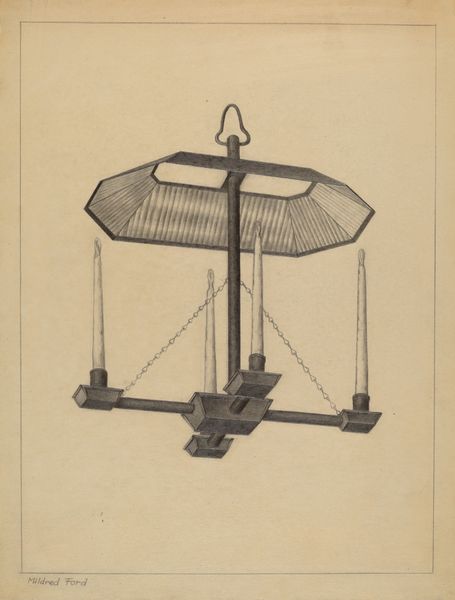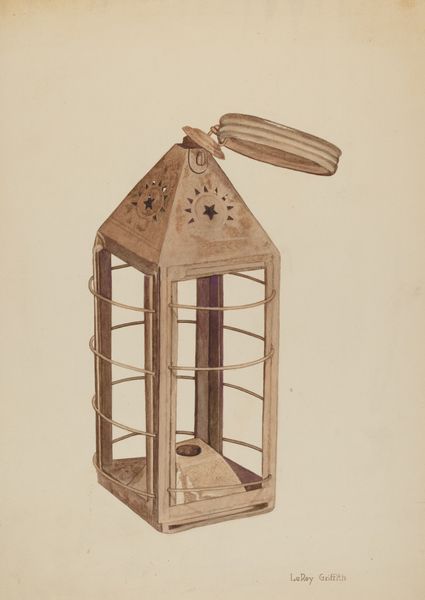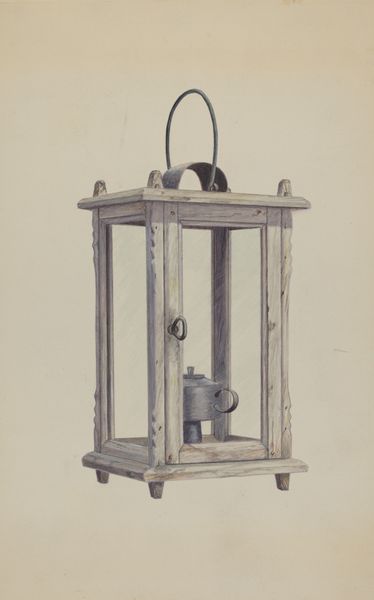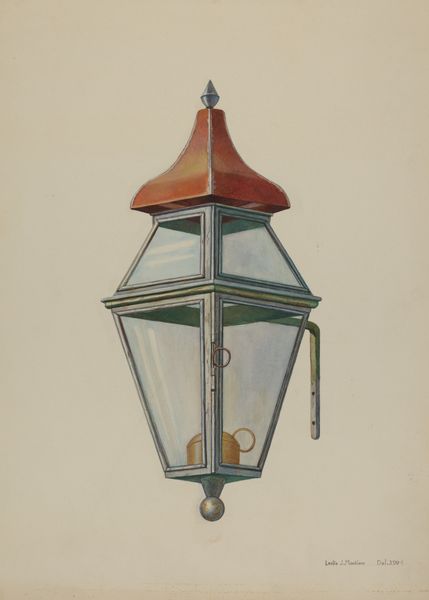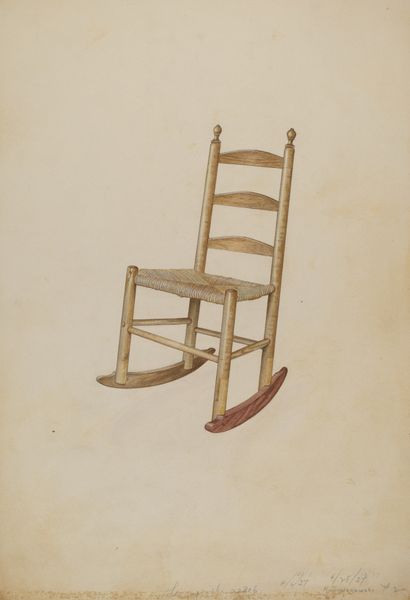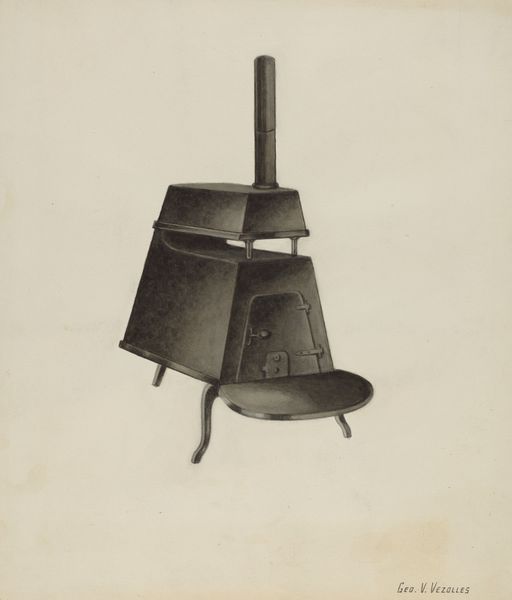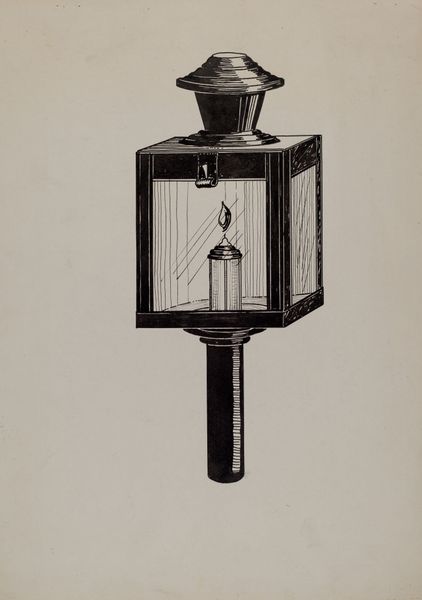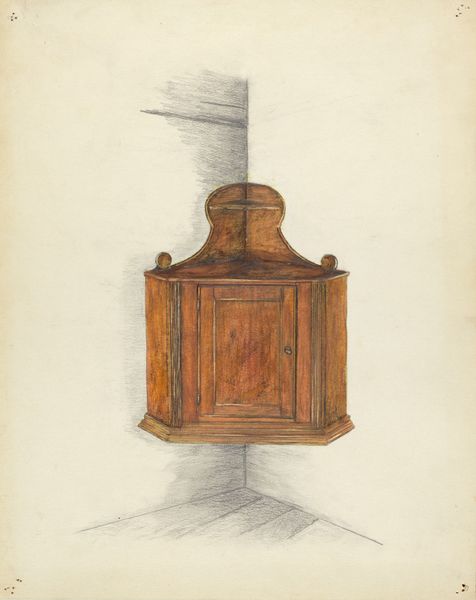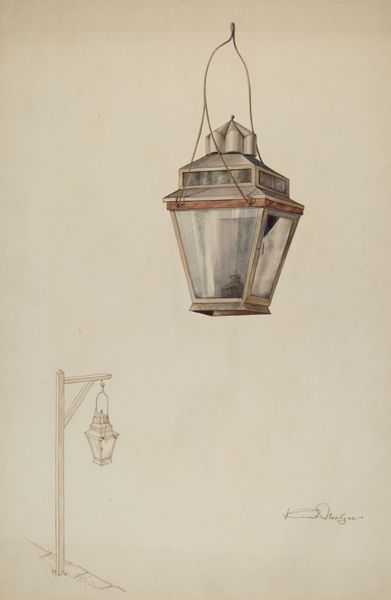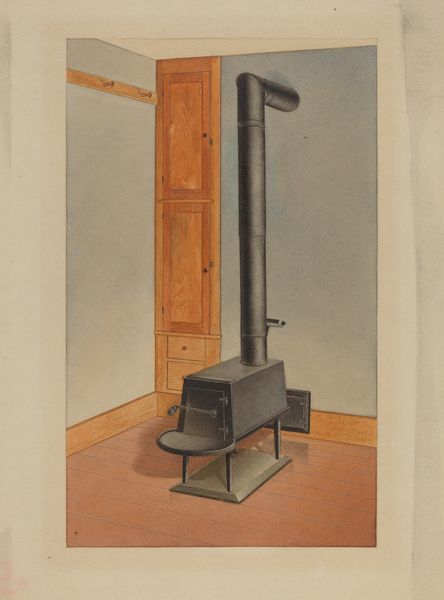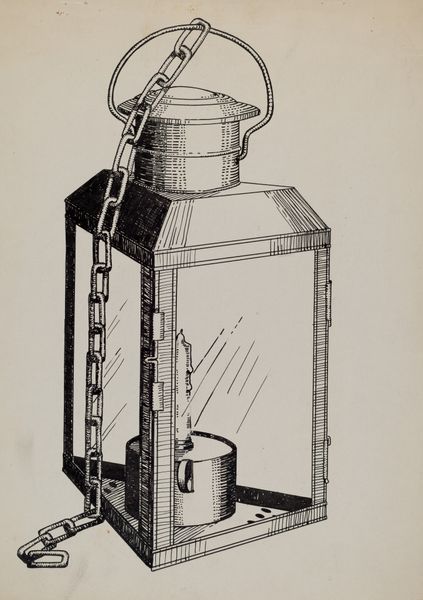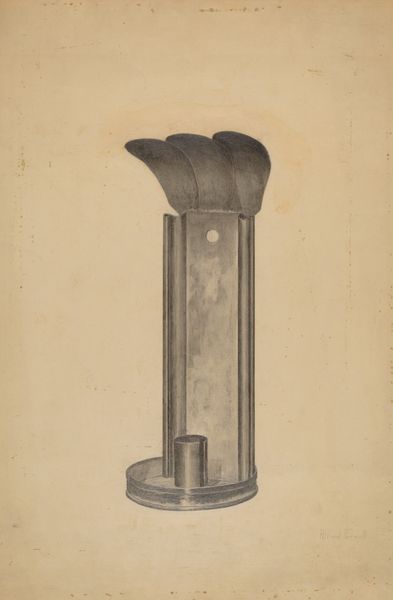
drawing, paper, watercolor, pencil
#
drawing
#
landscape
#
paper
#
watercolor
#
coloured pencil
#
pencil
#
academic-art
#
watercolor
Dimensions: overall: 36.9 x 29.2 cm (14 1/2 x 11 1/2 in.)
Copyright: National Gallery of Art: CC0 1.0
Curator: E. Boyd's "Pulpit," a watercolor, pencil, and colored pencil drawing on paper, created sometime between 1935 and 1942. What strikes you initially? Editor: There's a stark simplicity here, almost an unsettling stillness. The high vantage point, the way the pulpit is isolated against a vast expanse of off-white. It feels almost devoid of context, floating. Curator: Precisely. The removal of context is key. Boyd was deeply concerned with the architecture and its role within these communities. Focusing solely on the structure highlights its significance beyond its functional role. This drawing asks us to examine the cultural weight placed upon such spaces, beyond just being a place for delivering sermons. Editor: So you're saying it is less about the specific religious context and more about the symbolic power of this particular architecture, right? I see that in how the lighting fixtures above mirror the structure itself, which creates this unsettling feeling of being watched from above...almost surveilled. It prompts consideration of themes like authority, perhaps control, certainly visibility. Who has the right to speak and from where? Curator: Exactly. It forces a consideration of who and how those roles manifest. The meticulous rendering also alludes to a desire to understand—even perhaps preserve—this architecture, particularly since Boyd dedicated much of his career to studying the historical buildings. It’s not just representation but also an act of valuation of his immediate community through what existed. Editor: Given that the artwork was created in the late 1930s to early 1940s, what cultural conversations can it ignite, especially around representation and belonging? The monochromatic feel contrasts the detailed lines of both the staircase and ceiling lighting to emphasize, rather harshly, visibility and the very narrow entrance itself to the elevated speaker's stage. Curator: The drawing, through its elevation of form over function, compels viewers to consider both historical interpretations of architectural representation and prompt an internal conversation of the systems that govern them and, consequently, society at large. Editor: It’s quite chilling once you consider how structures – both physical and institutional – shape how we perceive power and how visibility within these contexts creates the framework of oppression for specific peoples in society. Thank you, this piece really hits differently now!
Comments
No comments
Be the first to comment and join the conversation on the ultimate creative platform.
